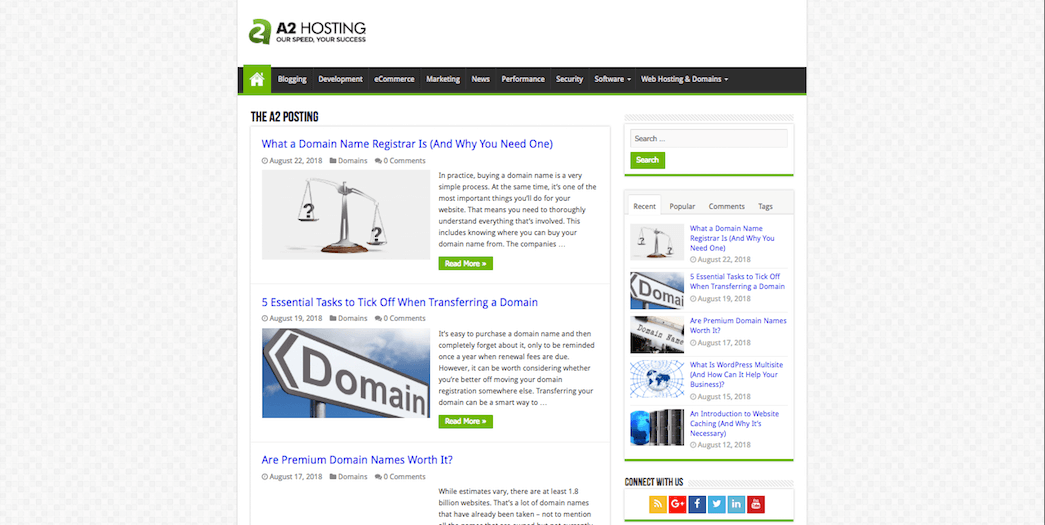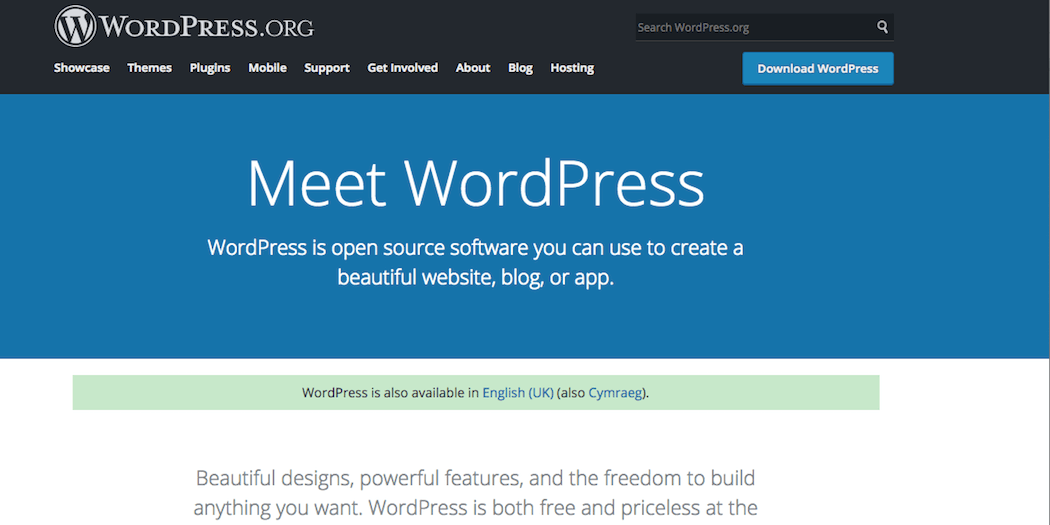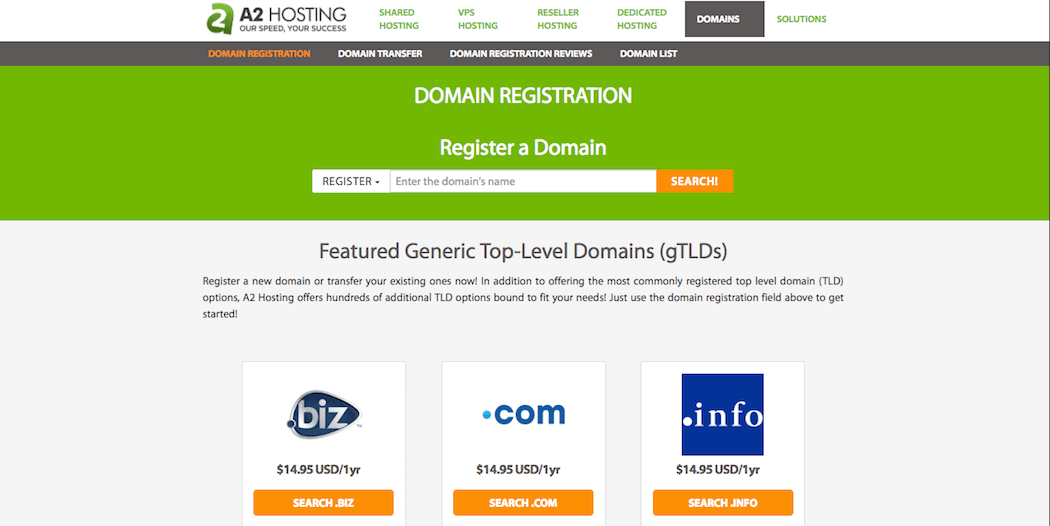- May 26, 2020
 0
0- by A2 Marketing Team
It’s currently never been easier to start a blog. However, with so much information available on how to begin – not to mention the different types of entry points – it can be confusing to know exactly what to do. For example, there are hundreds of different blogging platforms to choose from – and that’s just the tip of the iceberg.
Fortunately, starting your own blog is a snap by following a few short steps. To begin, you’ll want to choose a niche, then look at suitable platforms. From there, you’re going to concern yourself with choosing a suitable domain and host, then designing and developing your blog itself.
If you’ve never created a website before, this piece is for you! In this article, we’ll break each of these steps into short, manageable chunks. By the end, you’ll have a live blog, ready to showcase to the world!
Why You Would Want to Start a Blog

In short, blogging is a flexible format that lends itself to a number of uses. Whether you’re a business owner, or are looking for a new hobby, there are many advantages to starting a blog:
- If you own a business, a blog can give your site an SEO boost. Search engines favor sites with fresh content, which is a problem a blog can solve.
- You likely have expertise in your field – so share it! You can point to a blog as a showcase of your knowledge, and it can be invaluable when looking to win new work.
- A blog can also be an excellent way to showcase your skills and/or products. For example, a freelance photographer could write blog posts including samples of recent work.
- Your personality is often your ‘secret weapon’ in business, and can add a human element to an otherwise structured and formal setup. A blog can showcase this, and you control how much of it is ‘seen’.
Whether you want to blog for fun or to boost your business, it’s easy to get started! Let’s look at the basics next.
How to Start a Blog (In 5 Steps)
In our opinion, starting a blog takes five steps. The first aspect you’ll need to consider is your place in the whole ‘blogosphere’.
Step 1: Find Your Niche
With so many published blogs available, a strong niche is crucial. The more focused you can make your blog, the more chance you’ll have to stand out – especially in an oversaturated field.
To find your niche, you’ll want to think of a broad idea, then come up with a specific angle. For example, popular blog Humans of New York interviews random people on the street (the broad idea), who were initially New Yorkers (the specific angle):

At this stage, you’ll likely want to figure out your broad idea, but don’t fret too much about finding something unique, otherwise you’ll never get started. Next up is getting specific.
Step 2: Brainstorm 10 Blog Post Ideas
Once your broad niche is decided upon, next is figuring out your unique angle. To do this, you can start by writing ten different blog post ideas, and should keep them as narrow and focused as possible. It’s important to do this before you go further, because your idea may evolve as you brainstorm, or you may realize your passion for the topic isn’t really there.
While ten ideas will seem excessive, consider that your blog will constantly need fresh content. If you’re getting stuck, try one of these brainstorming ideas. Once you have a list, return to your overall blog idea. Look for any common threads in the ideas that relate to your broad niche, to help you focus in on a unique angle.
For example, if you’re writing a cooking blog and discover most of your dishes are ‘Tex-Mex’, that would be a more specific idea than just cooking. However, it’s important to make sure your niche isn’t so narrow that you’ll run out of ideas! It’s all about finding balance.
Step 3: Decide on Your Platform
Next, you must choose a platform to publish on. We recommend a Content Management Systems (CMS) suitable for blogging. A good place to start is with your host – they should be able to recommend a platform. Regardless, there are two major types available: free ‘site builders’ and self-hosted sites.
Self-hosting
In short, self-hosted sites require you to purchase your own domain and hosting plan. They generally offer you full control over how your site runs and is presented, and are suitable for any sized website, from a simple blog to a large-scale enterprise site.

WordPress.org is one of the easiest and most flexible tools to use, but there are a number of choices such as Joomla!, Drupal, and Ghost. We’ve previously compared some of the simplest CMSs on the market for blogging, and that piece is a go-to to help you make the best decision for you.
Choosing a host will naturally be a part of this decision, and we recommend shopping around for something meeting all of your requirements. Once you have these in place, you can work on getting noticed, staring with your domain name.
Step 4: Come Up With a Title and Register a Domain Name

Once you have a platform chosen, deciding on a strong name (and domain) for your blog is an important aspect, and you’ll want to come up with a punchy, memorable title for it. Again, it should be short, simple, descriptive, and easy to spell.
Bear in mind that the subdomains you receive with site builders (i.e. yourblog.wordpress.com) are usually not suitable for any serious venture, and also limit your site’s SEO potential. If you’ve followed the self-hosted path, you’ll need your own domain name.
Finally, there’s purchasing your domain. While some believe you should always separate your domain and hosting, keeping them together is the ultimate in ease of use. This is true especially if you’re using a trusted provider with a high uptime (which minimizes any potential issues).
Step 5: Connect Your Domain Name and Start Blogging
Once you have a domain and hosting purchased, you’ll want to configure it all. Usually, this step is only necessary if you’re using a separate domain registrar and hosting. For combined solutions (for example, from A2 Hosting), the name server settings are often handled for you.
The first step is to find out what your blog host’s name servers are. This process is going to differ depending on the host and registrar in question, but once you do have it, you’ll need to link your domain and hosting by adding a record to your registrar’s dashboard. Consulting their documentation here will be the best plan of attack.
Once everything is ready, you’re ready to start creating your new blog! You’ll likely want to create some other essential pages, choose a theme and plugins (if you’re using a CMS such as WordPress or Joomla!), and begin creating your layout and design. Of course, you’ll also want to start creating blog posts, and fortunately, a platform such as WordPress makes this a breeze!
How To Start A Blog Conclusion
Creating a blog is a simple process, although it may not seem that way at first glance. Fortunately, there are a number of specific elements you’ll need, and once you have them in place, the sky’s the limit!
This piece looked how to create a blog in five easy steps. Let’s recap them quickly:
- Find a niche to write about.
- Brainstorm post ideas to help find your angle.
- Decide on your blogging platform.
- Come up with a site title and register a domain name.
- Connect the domain name to your blog and begin blogging!
Image credit: Pexels.












